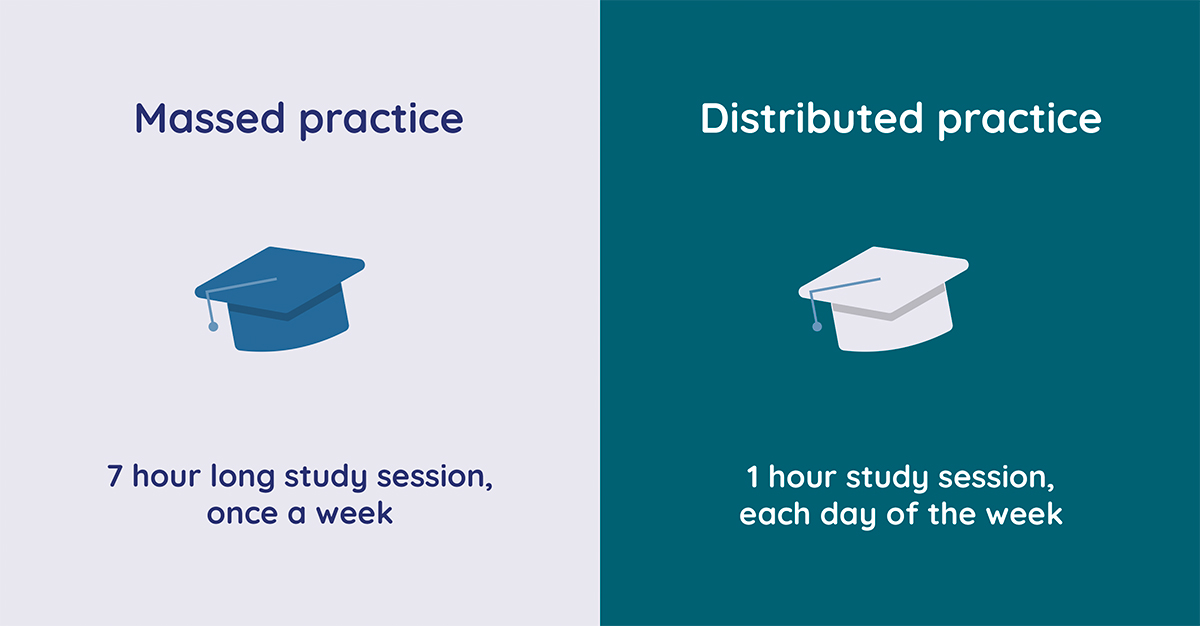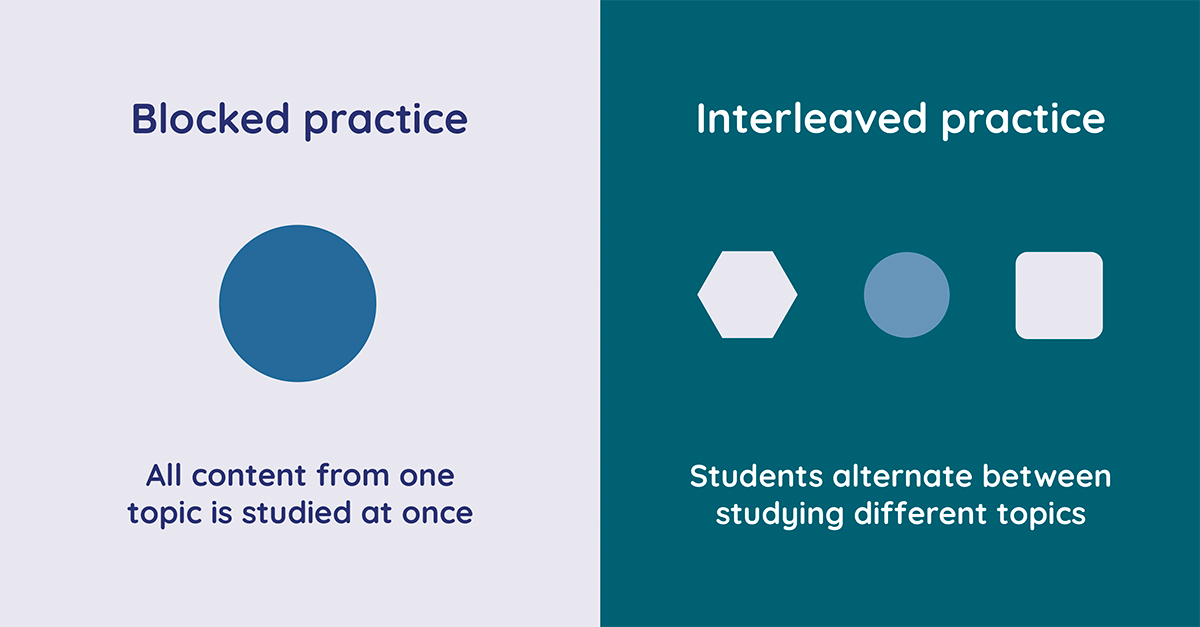
March 11, 2024
In this blog post, we present two of the most effective learning strategies proven to work with different types of learning materials, learning conditions, and student characteristics (Dunlosky et al., 2013). We chose these two strategies specifically for their demonstrated effectiveness in learning mathematics. We will share how you can apply them to your OMPT exam.
Distributed practice means that the total time for learning is distributed across at least two temporarily separated learning sessions – instead of massed in only one learning session (Barzagar et al., 2019).

Instead of studying for seven straight hours, learning will be much more effective if you separate your study sessions and learn one hour each day of the week.
Distributed practice has been proven effective for learning mathematics. One of the studies focused on the learning and retention of plane geometry by high school students (Yazdani & Zebrowski, 2006). The results showed significantly better results for students who learned geometry through distributed practice compared to the group that learned through massed practice. Additionally, the distributed practice group performed better at a test six weeks after the experiment, showing longer retention than the other group.
When preparing for the OMPT exam, distributed practice can be a very helpful technique. If you have enough time, separate one or two hours every day of the week to go through the OMPT material. On the OMPT website (Test takers -> Tests), you can find information for each of the exams. There is a clear overview of the syllabus as well as the recommended study time in hours. This information can help you plan your studying better.
Interleaved practice appears as the better option, compared to blocked practice:

Blocked practice means that all content from one topic is studied at once. With interleaved practice, students alternate between studying different topics.
For example, a teacher might give a lesson on the Pythagorean theorem, focusing only on this topic. Right after the lesson, the teacher gives the following exercise:
A bug crawls 24 cm west and then 7 cm north. How far is the bug from where it started?
After this blocked practice, the students know that they will be required to use the Pythagorean theorem, as that was the only topic covered in the lesson. Blocked practice denies students the opportunity to learn how to choose a strategy on the basis of the problem itself, which is what students must do when they sit for a cumulative exam (Rohrer et al., 2020).
A good example of interleaved practice can be seen in the following lesson: a teacher first teaches the students about three geometrical objects: a sphere, a circular cone and a pyramid. The teacher explains to students different formulas used to calculate the surface area of each object.
After the theoretical part, the students get the following exercise:
Calculate the surface of a birthday hat that is 15 cm tall and has a radius of 7 cm.
This time, the students have to consider three different shapes they learned about and choose the formula that will help them calculate the surface of the object in the exercise.
Interleaved practice might require more effort at first, and it won’t give better results immediately, but it will lead to better long-term retention of the material. This way of studying will encourage you to consider different strategies and make a good decision on which one to use for any given question. With this approach, you will make better connections between the subjects, noticing their similarities and differences.

Instead of focusing on one topic per study session, try to alternate between different topics. For example, while preparing for OMPT-C, you could learn about angles, triangles and polygons during one study session instead of only focusing on angles. This will help you notice the differences and similarities between these three topics, ultimately leading to better understanding and longer retention of the knowledge.
We hope that these two strategies will help you organize your time better and feel prepared for your OMPT exam. Read this blog post to learn more tips for preparing for your exam, and visit our website to find out more about OMPT.